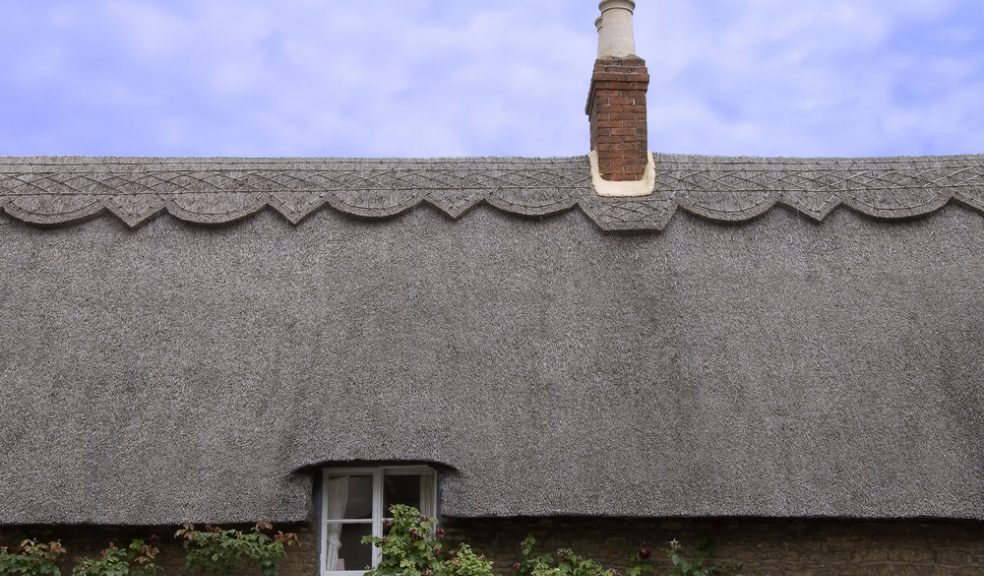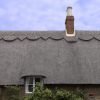
Is your thatched roof safe for winter?
Devon & Somerset are areas of outstanding beauty and also home to over 80% of thatched properties within the UK, which naturally contributes to the charm of the two counties.
However, Devon & Somerset Fire & Rescue Service are concerned that owners of thatched properties take steps to reduce the chance of an emergency relating to fire occurring. Fire in thatch is not an inevitable occurrence but it is an organic material, subject to different behaviour patterns depending on its surroundings, treatments and choice of materials or styles. It has a finite life span, measured in tens rather than hundreds of years. And above all it is combustible.
Fire in a thatched roof is difficult to detect and once started is almost impossible to control. Once a fire has taken hold within a roof it will spread rapidly, due to the very nature of how thatch burns and detection is often too late and invariably devastating! A thatched home can be ruined not only by the fire but by the amount of water needed to put it out, within an ancient cottage water can dissolve old cobb walls as well as causing serious water damage throughout.
Many of the thatch fires are chimney-related. Modern enclosed solid fuel appliances are designed to burn efficiently and cleanly, often flues pass through old chimneys, where there is only a four-inch thickness of brick, which makes the thatch especially vulnerable to the risk of heat build-up and eventually combustion at a point between the brick and the thatch.
The danger zone for heat transfer and thatch ignition, is associated with older and/or listed properties with any two or more of the conditions highlighted below:
- A deep multi-layer thatch where the thatch is over one metre deep–a guide to the depth of thatch can be assessed in relation to the level of visible chimney
- Originally chimney height would have been about two metres from the ridge.
- Regular use of a multi-fuel or wood burning stove or an open fire with an inappropriate, old or poorly fitted liner
- Central chimney surrounded by thatch or a house that is part of a terrace
- Electrical faults and careless workmen, any recessed halogen spot lights, those particularity in bedroom or bathroom ceilings
- Security Lights - situated too close to the eaves. Any outside lights, particularly those fitted with motion sensors should be installed at least 1 metre away from any thatch
- Discarded cigarettes and garden bonfires
- Television aerials on thatched buildings should be fitted to a freestanding pole. Where this is not possible, the aerial should be fixed to a gable or gable-end chimney, where the cable can be run down the wall, avoiding contact with the thatch. Disconnect your television aerial during electrical storms to prevent damage to the system
Wood-burning stoves
The increased efficiency of such stoves, while very welcome to residents of otherwise draughty older properties, has its own implications with regard to fire risk. Such efficiency depends on a high flue gas temperature of around 500°C which is concentrated in a narrow air column. When installed in a properly regulated, modern chimney this type of system is a highly effective way of getting maximum heat out of burning wood; but where ancient chimney stacks are concerned, the inappropriate introduction of such installations, with metal liners can create serious problems.
Research carried out in the1990s indicates that in a single-skinned brick chimney, heat can migrate into the deep thatch surrounding the stack and needs only to reach 200°C for charring of the thatch in contact to commence.
While this may not happen immediately, it must be remembered that the process of lighting and extinguishing the stove takes place on a regular basis year in, year out and because of the excellent insulating properties of thatch, the temperature does not drop to ambient in between lighting and extinguishing the stove.
If the use of such stoves is to be contemplated in an old thatched house, it is essential that a pumice concrete insulated liner be inserted to isolate the hot gases from the surrounding brickwork. It is also essential that such lining is carried out by a properly qualified installer to ensure that it runs centrally without coming into contact with the chimney interior, that there are no gaps in concrete segment liners and that it runs the entire length of the stack. The most popular of liners is either flexible metal or of a double skin metal construction, this type of liner is not recommended, the void around the pipe work must be backfilled with the recommended insulation material to avoid intense heat bridging the gap.
Traditionally, combed wheat reed and long straw thatch is repaired or maintained by fixing new coats over older layers. In Devon water reed thatch can also be spar coated in a manner similar to combed wheat reed. The depth of thatch increases over the years, and where the thatch abuts the chimney can easily reach depths of 1-2 metres. In this way, a considerable surface area builds up against the chimney making the thatch more vulnerable.
It is the combination of deep thatch and a central chimney in conjunction with the use of multi-fuel stoves that put properties most at risk.
If in doubt, ask and don’t use any chimney-related appliance until you are sure it is safe!
Article by Devon & Somerset Fire and Rescue Service

















